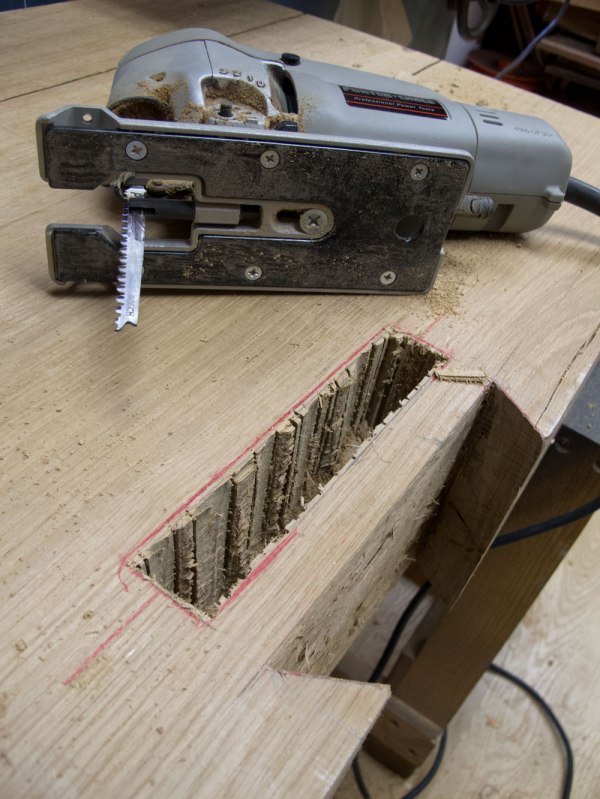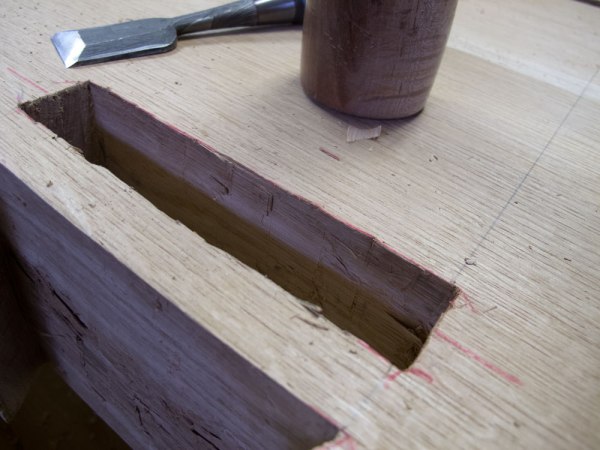Left to my Own Devices –

Nearly all of the workbenches I’ve built have been in other people’s shops – those that belonged to a school, a friend or an employer. So I’ve always worked with the tools they had. Or I worked under some artificial pretense – building a bench with only hand tools or a certain budget or a time limit.
In fact, I’ve never built an entire workbench in my own dang shop on my own terms.
That fact occurred to me as I was driving home some legs with a sledgehammer. Yes, a sledge. That’s what I prefer to use to drive workbench joints. But when outside of my shop I rarely have one (I usually leave it in my other sledgy pants), and so I make do with mallets, gravity or (no lie) cinder blocks.
What else is different in my shop? The through-mortises in the benchtop. I have cut these every way imaginable, from all-chisel, all-ibuprofen, all-the-time to a Mafell chainsaw mortiser.
In my shop, I take a three-stage approach that works well for me. I bore out most of the waste with an auger. Then I bust up the waste with an electric jigsaw. Using the jigsaw, I kerf all the walls down to my knife lines. The kerfs serve as a guide for my chisel. When the kerfs are chiseled away from the inside of the mortise, the wall is plumb or undercut. Period. End of story.

Today I cut all the mortises for my French oak workbench using this method. Within two hours I was driving the legs in with a sledge. The legs were going to go in on the first test-fit. No lie. Then I thought better of it. After all, getting the legs out of the mortises is much harder.
So I came upstairs and wrote this blog entry.
— Christopher Schwarz



